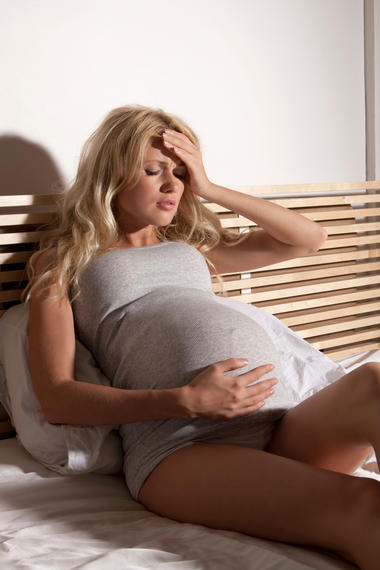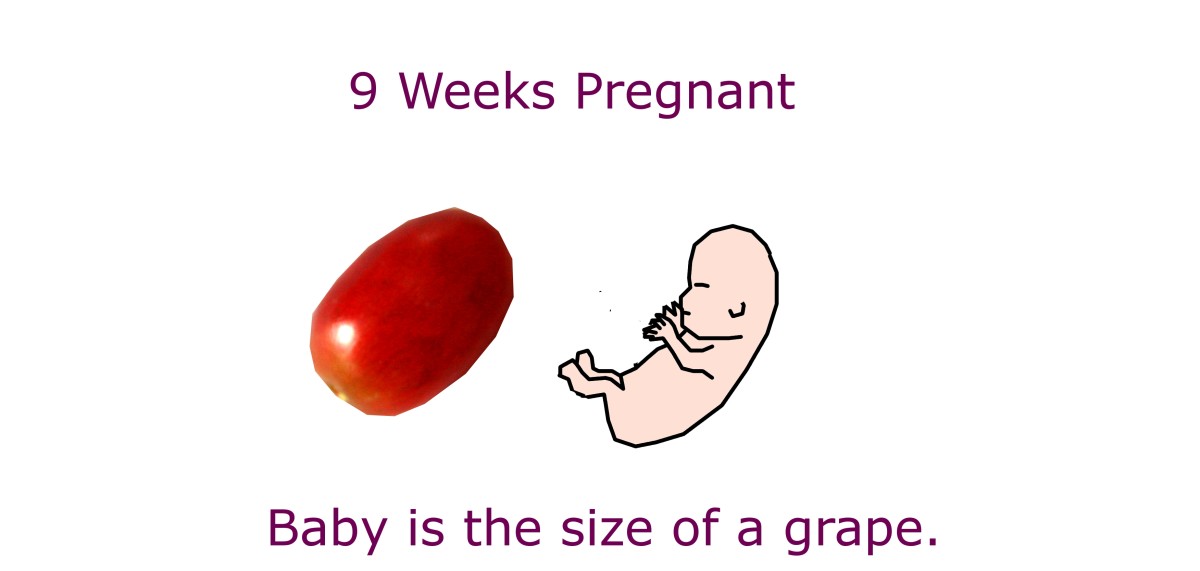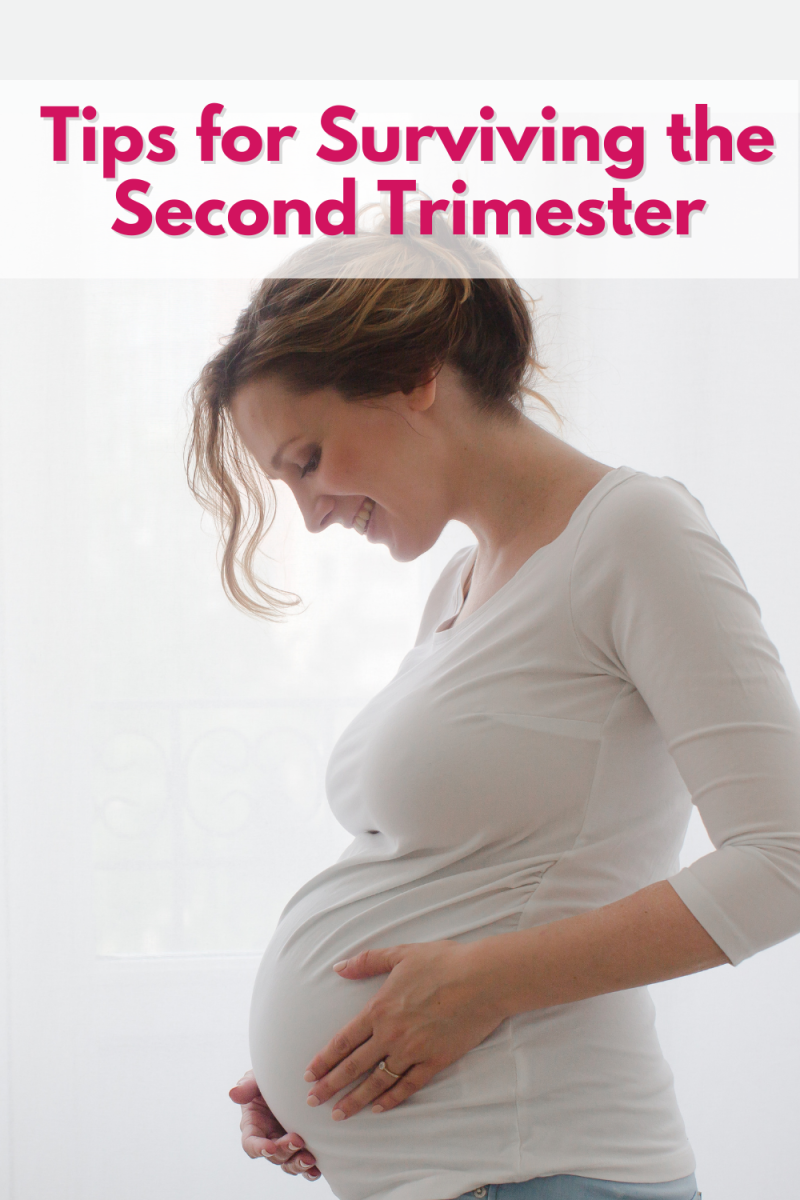Our Experience With Pregnancy Cramps

Cramps can occur in any of the three trimesters of pregnancy, but the causes may vary. I am the father of a daughter and a son. During my wife's pregnancies she experienced cramps. She had them during each trimester but with variable intensity. Here is how we managed them.
The first thing to understand is that a cramp is when the muscle tissue contracts involuntarily and does not relax, causing an unpleasant sensation or pain. During pregnancy, cramps may be mile, moderate, or severe. As a general rule, inform your doctor or midwife of cramps of any level of intensity.
Warning signs: If you have any one condition along with your cramps, you should seekimmediate help:
- Burning sensation during micturation/urination.
- Unusual vaginal discharge.
- Bleeding or spotting.
- Fever.
- Chills.
- Vomiting.
Cramps in First Trimester (1-13 weeks)
Early pregnancy cramps are usually caused by the enlarging uterus within your pelvic cavity. But there may be some other causes. They are as follows:
- Implantation cramps: During the fourth week following the last menstrual period, some women experience a lower abdominal cramp. These cramps are due to implantation of zygote into the uterine wall. Spotting and bleeding might be present as well.
- Ectopic pregnancy: This is an emergency condition. These types of early pregnancy cramps occur when the zygote implants somewhere other than uterine wall. Spotting and bleeding also accompanies this type of cramps. Unilateral abdominal pain (one one side of abdomen) and tenderness are common symptoms. You need to call your doctor immediately in this situation to take necessary measures.
- Miscarriage: Center lower abdominal cramps with spotting/bleeding. It's an warning sign of possible miscarriage. Whenever you experience such cramps, inform your midwife or doctor. Unfortunately such cramps and incidence are fairly common. In this situation the pregnant lady will experience passing of clumps of tissue or clots per vagina.
- Stretching pain: For a growing baby within the uterus, uterus needs to expand which causes stretching of the ligaments that support the uterus within the uterine cavity. Stretching of ligaments causes cramping during early pregnancy.
- Gut cause: Pregnancy hormone causes slowing of gut peristalsis to enhance absorption from the gut to meet the extra nutrient demand during pregnancy. This slowing of gut causes constipation, gas accumulation which results in cramps in early pregnancy.
Cramps in second trimester (14-26 weeks):
- Late miscarriage: Late miscarriage is a concerned issue if there is heavy bleeding along with your pregnancy cramps. You should immediately rush to the emergency department of a hospital.
- Gut cause: As the enlarging uterus along with the baby occupies more spaces within the abdominal cavity, it results in more slowing of gastric emptying, thus producing pregnancy cramping.
- Stretching pain: Similar to the cramps in early pregnancy that occur due to stretching of round ligament of the uterus, it continues in the second trimester also.
Cramps in third trimester (27-40 weeks):
- Gut cause: Continuously growing baby along with uterus continues to put pressure on the stomach. So after a rapid full meal, you'll feel discomfort and some cramping may occur. Multiple small meals can reduce such pregnancy cramping.
- Stretching pain: Growing baby along with uterus continues to stretch the round ligament more. Moreover, enlarged uterus tilts to one side of the abdomen, usually to the right side. This tilting also increases the stretching. In addition to it, when you change your posture i.e. when you stand from sitting or sit from lying position, stretching increases. This causes cramps in late pregnancy.
- Preterm labor: Lower abdominal cramping along with pelvic pain, diarrhea, water breaking may be an indicating sign of preterm labor when occurs before 37 weeks of pregnancy.
- Placental abruption: It's one of the causes of cramps in late pregnancy. It's unusual detachment of the placenta from the uterine wall. It's a medical emergency. Pain will be intolerable along with spotting/bleeding.
- Braxton Hicks contractions: These are irregular and intermittent contractions of the uterus. These may cause cramps in late pregnancy. No need to worry about these types of cramps only.
- Labor: Cramping after 37 weeks along with consistent low back pain is a sign of early labor. It's not a worrying sign. It's normal.
Pregnancy leg cramps:
Leg cramps during pregnancy are common. If you know the reason behind this leg cramps in pregnancy, you'll be able to reduce it to some extent. Here are few common causes of leg cramps during pregnancy.
- Inadequate venous drainage: Growing baby within the uterus (which is also enlarging with the baby and amniotic fluid/water inside) puts pressure on the great vessels in the abdomen which hampers the venous return from the lower limbs to the heart. It results in edema of the leg that is swelling of the leg. This leads to leg cramps in pregnancy.
- Low level of salts & nutrients in blood: Low-level calcium or magnesium in the blood causes pregnancy leg cramps. This low level of calcium or magnesium is due to increased demand with a low/regular intake. So a balanced and planned pregnancy nutrition plan can reduce the incidence of leg cramps in pregnancy. My wife suffered from leg cramps which improved with nutritional supplements.
- Deep vein thrombosis (DVT): This is one of the causes of leg cramps or pain in pregnancy. Clot formation within the vein is known as thrombosis. When thrombosis occurs in deep veins of the leg, it's known as deep vein thrombosis. It's more common among the pregnant mother than the women of same age. This type of pain may accompany redness, swelling, warmness and tenderness. A contributing factor for developing DVT in pregnant mother includes- age >35 years, overweight, smoking, carrying > 1 baby, having the previous history of thrombosis. Remember, it's a medical emergency.
Other causes of pregnancy cramps:
- A cough- causes stretching of muscles and ligaments leading to the development of cramps.
- Drugs- Drugs that removes water from the body may cause cramps in pregnancy.
What do Pregnancy Cramps feel like?
Most women describe the pregnancy cramps to be like regular menstrual cramps. Might differ in terms of localization of pain, intensity of pain. Occasionally there may be a sharp pain also. Cramps usually come as on and off pattern. Sudden onset of a sharp pain sometimes can be frightening but the occurrence of such pain is less in frequency.
To Most #Women, #Pregnancy Cramps are like Menstrual Cramps. #pregnancycramps. [Tweet This]
What should you do for pregnancy cramps:
When you have pregnancy cramps do the following along with seeking medical attention:
- Take rest. A normal pregnancy cramps will go away after several minutes. If it does not go away then it needs emergency medical attention. For unilateral pain, try to lie down on opposite side which will reduce the stretching of ligaments. Thus reducing pregnancy cramps in late pregnancy.
- Don't stand for long periods. Standing for long will augment the venous stasis more which will increase leg edema. So leg cramps will be more.
- Don't sit still on the chair for long either.
- Take plenty of water. 8-10 glasses of water daily at least. It will ensure your proper hydration and thus reducing cramps. But, don't drink anything 2 hours before going to bed.
- A balanced diet under the guidance of a pregnancy nutrition plan is necessary for the adequate supply of nutrition and salts.
- Don't take large meals, especially during the later stage of pregnancy. Take small but frequent meals, so that small spaces in stomach won't bother you. A small meal will accommodate the small place and frequent serving will ensure adequate nutrition.
- A warm bath at night before going to bed.
- Calf stretching exercise: Stand about 2 feet away from a wall and then lean forward with the outstretched hand resting on the wall. Ensure your sole of the foot rests on the floor. Stay in this position for 10 seconds and then stand straight for 5 seconds. Repeat the procedure for 5 minutes. Do it three times daily. You must do it before going to bed.
- Foot exercise: When foot moves up and down, it causes contraction and relaxation of the calf muscle. This contraction and relaxation help in venous return from the lower half of the body. So daily foot exercise-- rapidly move your feet up and down for about 30 times daily will help to augment your venous return resulting lessening of your leg edema and thus reducing your leg cramps.
- Apply heat locally. It helps to decrease cramping pain. My wife had a good result by it.
Knowing about pregnancy cramps will help you reduce your tension by understanding what is happening behind the cramps. Cramps during any stage of pregnancy can be normal or an alarming sign. Whether you know about it or not, you should consult/inform your midwife or doctor about your pregnancy cramps. Let them decide what you should do with it.





